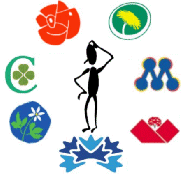Votes lost in cyberspace!
By Alexander Piatidis, September 2002
On the 15th of September Swedes will be voting in the national and local elections. The internet, more than ever before, is a crucial information channel for the different political parties. However, can voters find the information they need on the different party web sites?

Wondering which party to vote for?
Tried looking for answers on their web sites?
Those responsible for the different party web sites should be concerned. Why? Well, what happens if an undecided voter doesn't easily find an answer to their question on your web site? They look somewhere else, and perhaps they like what they find and stay there.
So, how have the different parties designed their web sites - based on their own idea of what voters might want, or the needs of voters themselves?
Four of our usability specialists recently conducted expert usability evaluations of 7 political party web sites and below is a selection of issues they found. (More detailed information was compiled in Swedish and has been made available to members of the Swedish press, and those responsible for the different political party web sites who have requested it).
Difficult to find the web sites
Several sites required many guesses (and/or use of Internet search services) to find the correct URL. A typical example was the site for Moderaterna - "www.moderat.se" and not "www.moderaterna.se" as many voters might expect.
Navigation troubles
Having found a web site, the next challenge was to navigate it. Most parties had opted for a top navigation, often with pull-down menus, though implemented in quite different ways. All had different quirks - one had such large pull-downs that they didn't fit on an 800x600 screen, another popped up new windows unexpectedly, and several required rather accurate and unnatural mouse movements to work through to lower levels.
Difficult to find information
Navigation design aside, clearly some parties had thought through their menu structure and labelling better than others. This became obvious upon trying to find information about "hot" election issues such as EMU and education, contact details for members of parliament, or even information about candidates.
Small text in large paragraphs
For those voters with less than perfect vision then certain party sites may literally give them a headache. What made matters even worse was that the formatting of texts on some sites (Centerpartiet being the worst offender) - scanning through pages to find information was impossible, so potential voters face daunting volumes of text they must read through in order to find answers to basic questions.
Technical faults
Several sites didn't work at all on occasions during the review (over 2-3 weeks prior to the election) - visitors being met with blank pages or error messages. Other common faults were search engines that produced nonsense errors, incorrect links/missing pages, and slow response times.
Overall usability
The 7 party web sites were grouped into three categories:
- Category 1 : Best of the bunch, but could be better
- Folkpartiet - http://www.folkpartiet.se/
- Moderaterna - http://www.moderat.se/
- Category 2 : Runners-up, with still some way to go
- Socialdemokraterna - http://www.socialdemokraterna.se/
- Kristdemokraterna - http://www.kristdemokrat.se/
- Category 3 : Laging well behind
- Vänsterpartiet - http://www.vansterpartiet.se/
- Centerpartiet - http://www.centerpartiet.se/
- Miljöpartiet - http://www.miljopartiet.se/
Note: The study was conducted during late August / early September and published on 9th September - appearing in both Svenska Dagbladet and Computer Sweden. With several days still to go before the elections, some parties say they made changes as a result.
Did you find this editorial interesting?
You might like to read some of our other editorials.
Please send us an email if you have any comments or suggestions!